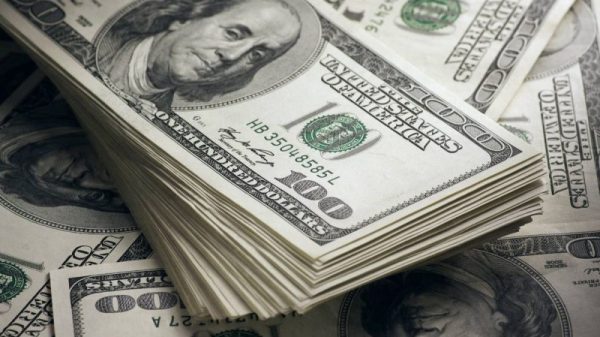VanEck Vectors Retail ETF (RTH) is a peculiar beast. It holds 26 retail stocks, 70% in the Consumer Discretionary sector and 30% in Consumer Staples. It’s tilted toward cyclical growth, but occupies enough “defensive” space not to get hammered too badly when the economy undergoes a downturn.
On Wednesday, RTH popped up on a StockCharts scan—”Entered Ichimoku Cloud.” With a not-so-great, but improving, SCTR score of 64.1 (the following day), this particular scan effectively finds potentially “good” stocks in decline.
Retail: The Macro Picture
Let’s take a look at the weekly chart of RTH over the last 10 years.
CHART 1. 10-YEAR CHART OF RTH. On a wide time scale, it’s nothing short of pure uptrend.
Following the 2020 pandemic crash, RTH’s swings became wider and more volatile. Still, the 50-period and 200-period simple moving averages (SMAs) held steady in their decade-long uptrend.
Looking at relative performance, RTH, again comprising 70% Consumer Discretionary and 30% Consumer Staples stocks, is outperforming the former by 26% and the latter by 68% (see panels below price chart display relative performance of RTH:XLY and RTH:XLP). The Chaikin Money Flow (CMF), in the lowest panel, has shown a steady stream of positive flow and buying pressure, fueling RTH’s ascent.
So, what does this mean for RTH today?
RTH’s Range Reflecting Broader Retail Uncertainties
The daily chart of RTH shows that the ETF pulled back in April and has traded within a small range since then.
CHART 2. SIX-MONTH DAILY CHART OF RTH. A closeup of support and resistance levels mirroring the general fundamental uncertainty of retail discretionary forecasts.
Its sideways movement between support and resistance (roughly $196 to $205; see dotted blue line) reflects the limbo that the broader retail industry is somewhat caught in, much of it focused on whether the Federal Reserve will hold, cut, or even hike interest rates. Nevertheless, traders and investors will jump the gun (as they typically do), speculating on the outcome that fundamentals will either validate or deny later. We’ll see these actions clearly when price breaks above the two levels of resistance or below near-term support.
While the CMF suggests that buyers may have the technical upper hand, note that the Ichimoku Cloud (specifically, the Kumo) has turned from a bullish green to a bearish red; its top level suggests resistance and coincides with the market-based resistance levels we currently see. If price breaks above the current resistance level, RTH will challenge its high of $213.
But what if it breaks below $196? Take a look at the chart below.
CHART 3. EIGHT-MONTH DAILY CHART OF RTH. If price breaks below support, how far down can it sink?
If there’s no bullish economic news driving discretionary retail, then you can expect price to break below support at $196. While some bullish might attempt to jump in at $193, the 38.2% Fibonacci Retracement level, the 50% ($187) and 61.8% ($180) levels are more likely to see stronger buying activity, as the latter roughly coincides with RTH’s 2022 and 2023 highs (as you can see in the weekly chart above).
All eyes are on the Fed, along with other economic reports and conditions that will likely affect market sentiment.
The Takeaway
VanEck Vectors Retail ETF (RTH) presents a balanced mix of consumer discretionary and consumer staples stocks. Despite recent volatility, its long-term uptrend remains intact. The key will be watching how it reacts to upcoming economic news and Federal Reserve decisions. Whether RTH breaks above or below its current levels, mapped out before you are the levels in which you can anticipate market action.
How to Run an Ichimoku Scan (or any technical scan)
Log in to your StockCharts account
Go to Your Dashboard, and in the Member Tools window, scroll down to Reports & More, and click on Sample Scan Library.
The Ichimoku Patterns are in the Candlestick Patterns section.
Click the Run button next to the scan (in this case, Entered Ichimoku Cloud) and see a list of the filtered stocks and ETFs.
Why This Scan?
As mentioned above, you might want to run this scan, particularly when the broader market is rallying, to see if any strong stocks are pulling back. Depending on the stock, the Ichimoku Cloud can often serve as a support range, making it an ideal tool for identifying “buy-the-dip” opportunities.
Also, you’ll want to look at other indicators in addition to the price action, in order to avoid catching a falling knife when you intend to buy the dip.
Disclaimer: This blog is for educational purposes only and should not be construed as financial advice. The ideas and strategies should never be used without first assessing your own personal and financial situation, or without consulting a financial professional.





























